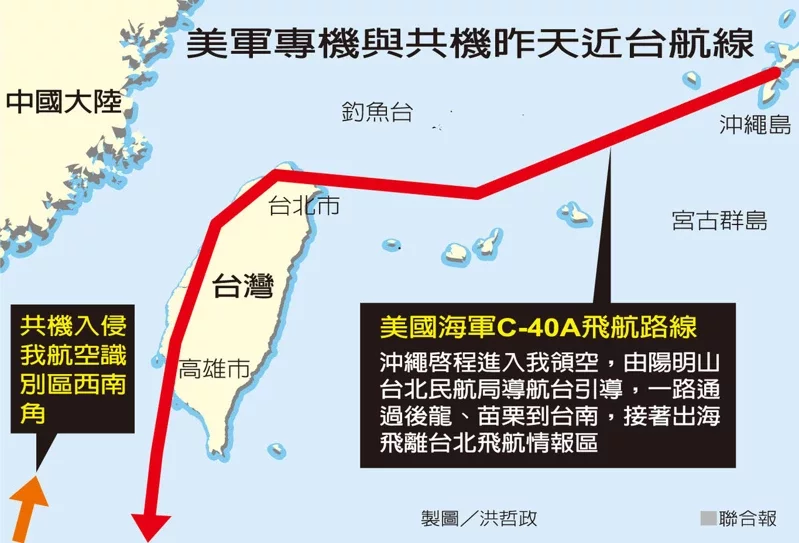
Is It a Big Deal That US Planes Are Flying over Us? Here’s What You Should Know
But is all that really the case? In the past couple of years, news about the flight paths of these kinds of aircraft has appeared extensively on community websites and in the media. The question is, why?
Modern aircraft are all equipped with transponders, which transmit identification information during flights to facilitate tracking by air traffic control centers and for identification of potential threats. Generally, military aircraft missions are more sensitive, with little information that is disclosed to the public. Civil aviation does not have similar concerns, as the advancement of the technology of automatic dependent surveillance-broadcast, known as ADS-B, in modern passenger aircraft can continuously broadcast information such as an aircraft number, flight number, departure destination, real-time position, speed and altitude to the outside world. Since the signals are not limited to air traffic control units, some have seen it as a business opportunity, linking up with enthusiasts from around the world to set up receivers and publish air traffic updates on websites for public viewing.
The C-40 is basically a Boeing 737, which is used by the U.S. military for administrative transportation of personnel. Taiwan’s armed forces include a special squadron for a similar purpose. This commercial type model is equipped with ADS-B, but depending on the situation, will only allow transmission of part of the content. The aircraft used by Taiwan's president, for example, is also a 737. Normally, the public has no access to the complete travel information for the plane, but the aircraft has previously been spotted by media on flight-tracking websites, circling over the sea off the east coast of Taiwan. It turned out that it was a test flight after an overhaul, and since there were no issues of confidentiality, the ADS-B system was turned on for testing. Under usual circumstances, only a small fraction of information is released to the public due to the sensitive nature of the head of state's missions.
Back to the main topic, the U.S. Army C-40 was heading from the Kadena Air Base in the Ryukyu Islands to the U-Tapao Air Base in Thailand. Relevant ADS-B information was listed in plain view on the web, with an indication that it was a general personnel transport operation, with no special sensitive issues. In general, one would fly from the east of Taiwan into the airspace over Cape Eluanbi, then turn left and fly to the South China Sea. This time, however, the aircraft entered at the northeast corner of Taiwan and flew south along the western part of the island. This was likely because the Taiwanese military was firing live in the airspace above the sea off Hualien (located on the east coast of Taiwan), prompting the U.S. craft to take a diversionary route over the Taiwanese island.
Does the flight path of the U.S. Army's administrative aircraft over Taiwan represent a breakthrough in the relationship between the two nations? The answer is no. For decades, U.S. officials such as U.S. senators and House representatives have been visiting Taiwan on military jets, C-40s, and other administrative aircraft, appearing in Taipei Songshan Airport enough times that this is no longer news. Indeed, it would be far-fetched to say that such a "flying over" is a breakthrough.
This incident of "the U.S. military transport aircraft flying over Taiwan," though of no special significance on a factual level, continues to be a focus of news media, and is having a disproportionate impact on public audiences. Much of this must be attributed to the ecosystem of domestic news and media. The reading public is interested in military news, but often has little knowledge of the workings of the military. Furthermore, due to the confidential and sensitive nature of this type of information, it is not easy for the consumers and writers of such news to distinguish between truth and falsehood. They often not only express their own views, but come up with idiosyncratic interpretations about the shapes of what lies below the tip of the iceberg based on their own political inclinations. In this era of real-time online news, the media are like terriers chasing after a toy rabbit. As long as someone starts running, no one else will pause to think about consequences, and they don’t care if what they are chasing after is outrageous or not. Let's first click “subscribe.”
The C-40 incident may have only been a misunderstanding, but there are many other examples of governments and political powers that have discovered the enormous propaganda value of exposing information anonymously in this era where social media is dominant. While the information thrown onto the internet may not necessarily be false in itself, it is clear that, like a blind man touching an elephant and asked to describe it, each person has access to only a small part of the whole. It is human nature to summarize and piece together known information, but when the sources of information are limited and most likely to have been filtered many times, there is a big question mark as to whether or not the "complete picture" presented through this process is the actual picture.
Thus, a not unusual choice of flight path was seen as evidence of warming relations between Taiwan and the United States. Is this merely just a misunderstanding, or is it an opportunity for someone to create an impression in the public's mind to advance some self-interest? We may never know the answer.
Welcome to this mysterious, fascinating world, filled with lies and half-truths. No one can get through this maze of interwoven truths and falsehoods without making a mistake; the only way to increase our chances of remaining "unfooled" is to enrich our own knowledge, strengthen our logical thinking skills and not be dictated to by all the preconceived notions out there.


